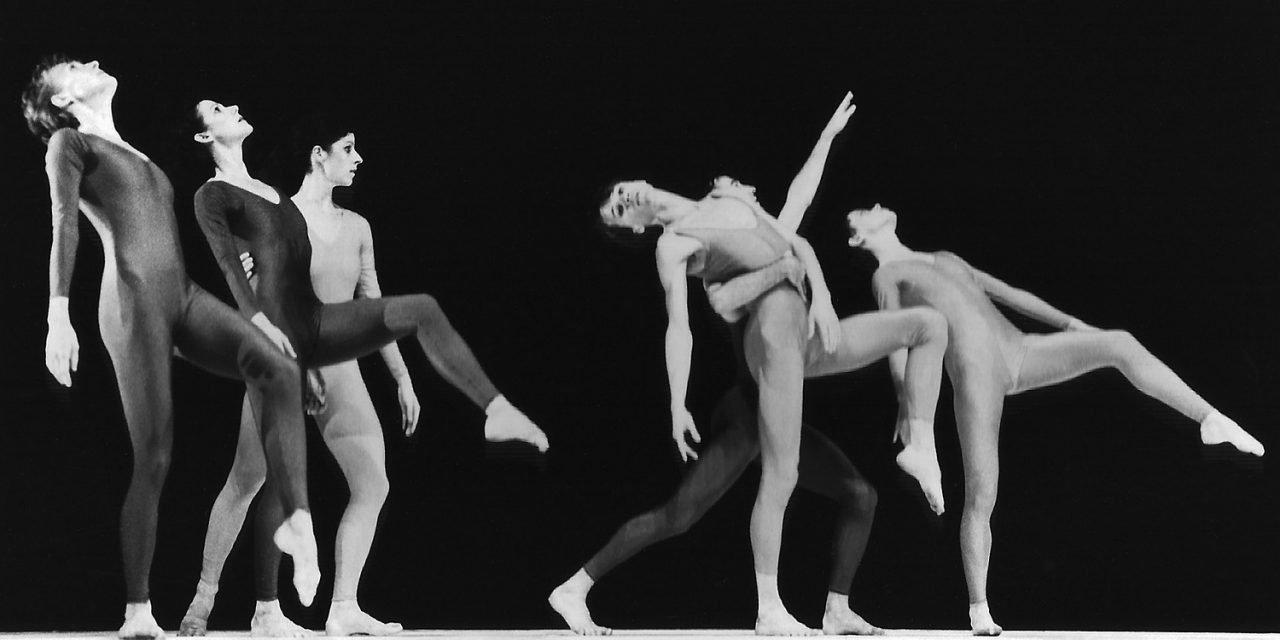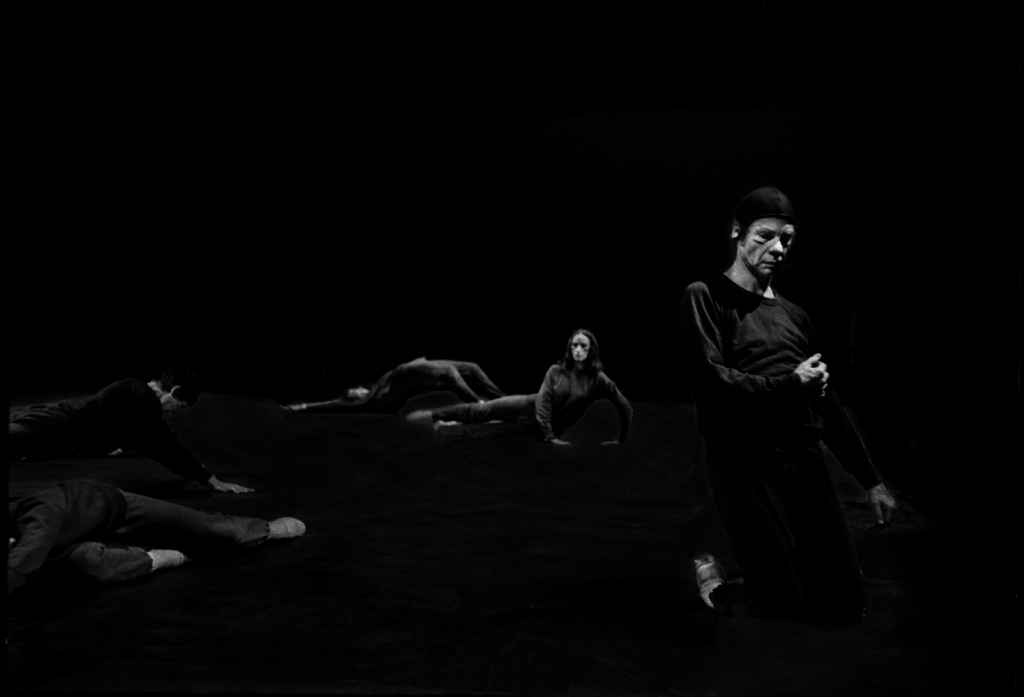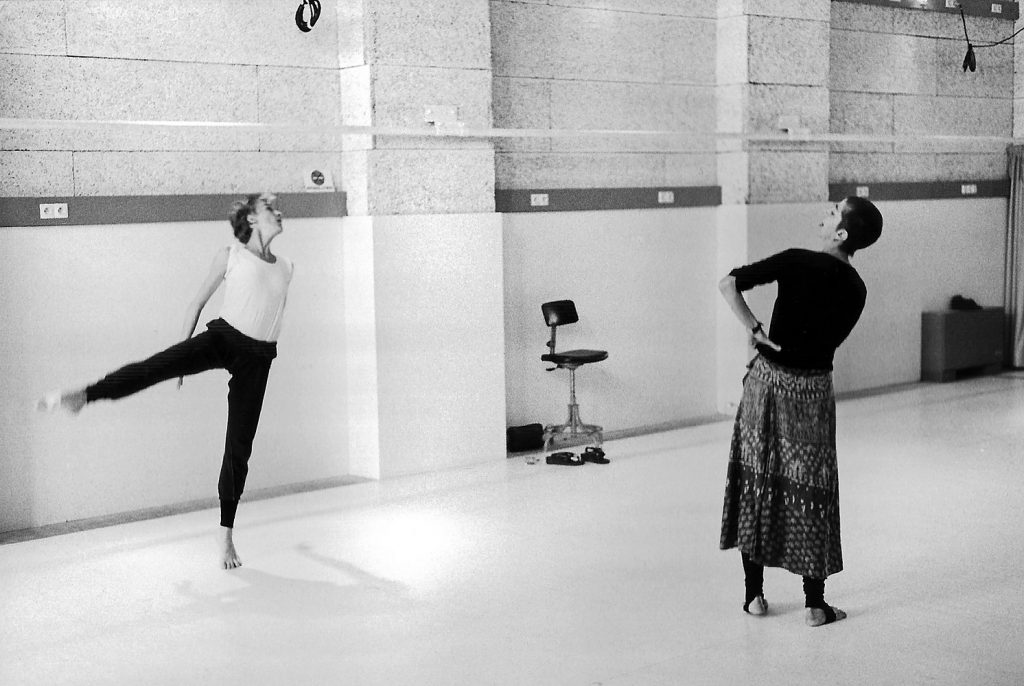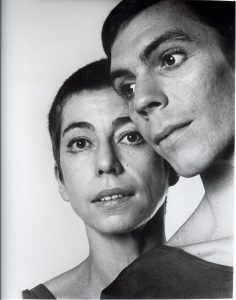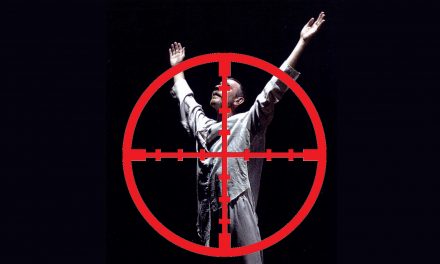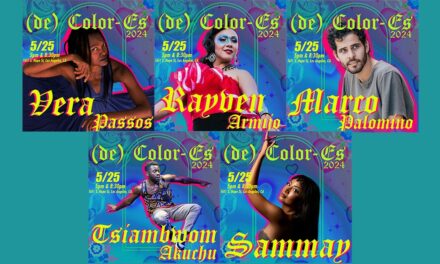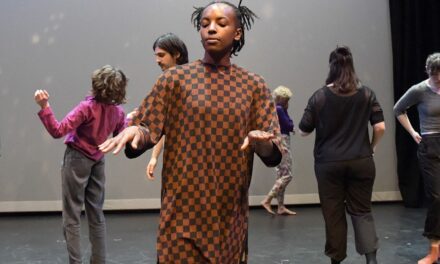Since I have been writing about dance I have shared a few stories about my time with the Merce Cunningham and the Viola Farber dance companies, so when LADC launched its new series “Stories From the Inside” I was hesitant to submit one. Here I sit, however, in my office during the governor’s Stay-at-Home mandate with my fingers dancing across my computer’s keyboard.
The question was, with so many stories from 40 years of performing, what would I write about? Do I write about after the premiere performance of Cunningham’s Walkaround Time in Buffalo, NY having dinner with French painter Marcel Duchamp or Sandra Neels finding a roach in her spaghetti dinner at the post performance reception for the Merce Cunningham Dance Company in composer Gian Carlo Menotti’s castle in Spoleto, Italy? Do I write about the night I was knocked out cold performing Cunningham’s Winterbranch at the Brooklyn Academy of Music (BAM)? Or should I tell another on tour reception story when Sandra Neels and I secretly wandered the upstairs floor of Joyce Carol Oates’ mansion outside of Mexico City? Side note: her home had a swimming pool size fountain just inside the main entrance.
Then there’s the afternoon that Chase Robinson and I were getting dressed for rehearsal in Mexico City when a propped-up mirror fell, hit the dressing table edge sending shards of glass directly at the two of us. Several hit and sliced open the back of both Chase’s legs causing him to be rushed to an emergency room, but somehow they totally missed me. Or, would people like to hear the story about how, during a run on the Umbrella Dance Festival in NYC , the sound guy put the reel-to-reel tape of Alvin Lucier’s music Vespers on backwards? The tape was stored “tails out” which was standard procedure with reel-to-reel tapes and the man had forgotten to rewind it. The curtain was up and four of us were ready to perform Farber’s Poor Eddie, so she gave us the signal to continue as planned. Miraculously, we ended with the music. Hey, it was electronic music and we were well rehearsed. Besides, it was the 1970s, the age of John Cage and probably the audience thought that it was what Viola had chosen. How she named the dance Poor Eddie is an entirely different story – nothing to do with the dance.
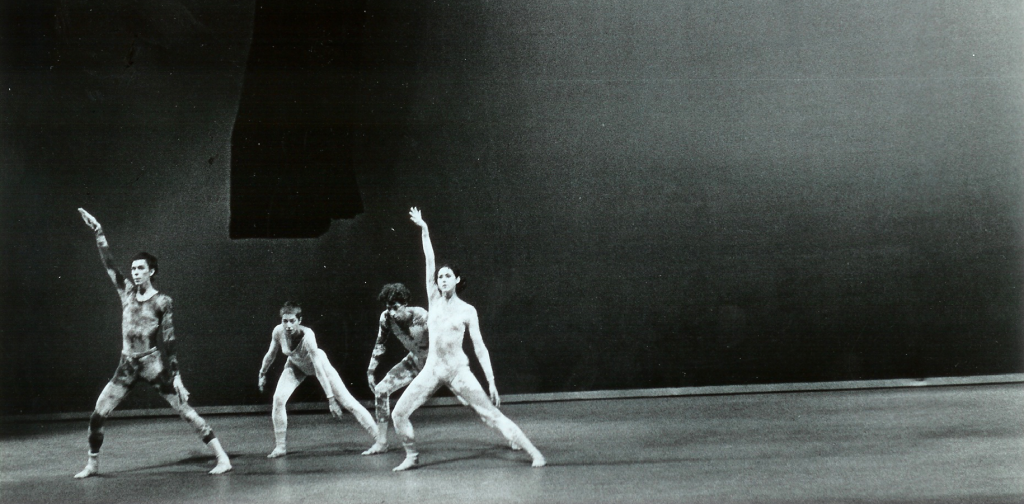
(L to R) Jeff Slayton, Viola Farber, Andé Peck, Anne Koren in “Poor Eddie” (1972) Choreography by Viola Farber – Photo by Mary Lucier
Do I write about when I was performing a solo at California State University, Fullerton to live music performed by pianist and composer Ruby Abeling, the Music Director of Jeff Slayton & Dancers? The theater crew refused to move the theater’s piano from underneath the stage where it was stored, and so we had to open the door leading into the orchestra pit and have Ruby perform her music while I danced above her head. All my training to aid me in dancing quietly flew out the stage door because I had to make sure Ruby could hear where I was in the dance. It put a new slant on playing by ear.
Oh yes, there was the night Pat Finot, director of the CSULB faculty concert, called asking why I wasn’t at the University Theater. I had gone home to rest and fallen asleep without setting my alarm. Pat’s call woke me up around 6:30 pm. I was scheduled to be onstage performing my solo To Be Continued? At 8 PM. I somehow got to the theater (a 20-minute drive), semi-warmed up (no time for makeup) and onstage on time. How did I dance you ask? I have no idea, but my muscles complained for days.
I have settled upon a story which took place in the summer of 1983. Viola Farber and I were invited to teach at the International Arts Festival in Arles, France and it would be the final gig of Farber’s French company while also acting as the Artistic Director of the Centre National de Danse Contemporaine in Angers (1981-1983).
Upon arrival in Arles, our hotel room had been given away to a higher bidder. This was an international festival and the hotels were all booked, but after much searching, Viola’s manager finally found a room in a charming nineteenth century hotel. The concierge was an eccentric and fierce looking woman with dyed purplish-red hair piled high atop her head, but our rooms, though long in the tooth, were clean and within walking distance of where we would teach.
It was a particularly hot summer, and we discovered that we would be teaching six days a week for two weeks in a cavernous gymnasium whose curved roof had overly large skylights that allowed the sun to bake down upon us all day. Where in the gym we taught travelled as the sun moved across the sky. The majority of students were at the beginner level and the condition of the gym’s non-sprung, unforgiving floor was anything but desirable. After many years of touring experience under our dance belts, we knew that we were in for an exhausting experience. Chin up, leotards on, 5, 6, 7, 8, and plié.
At the end of each six-hour day, we dragged our drenched and aching bodies back to the thrill that Viola’s bathroom had a tub and mine a shower. We found out, however, that the hotel’s water pressure was almost non-existent, but experience came to the rescue. Viola and I set up a routine of starting the water in her bath tub, and then going into my room to enjoy a mug of French coffee and recapping our day. When we thought that Viola’s tub had enough water for her to almost soak in, I set about attempting to take a shower in what little water struggled its way up the hotel pipes and at long last dribbled out of the showerhead. Once “clean”, we lumbered our way to the same nearby restaurant every night knowing that the food was excellent, inexpensive and most importantly, close by.
What we did not realize until we each fell into our separate beds the first night, was that transpiring every night, seven nights a week outside our windows from 10 PM to 1 or 2 AM were screenings of the festival’s film entries, projected against the outside wall of the building opposite our hotel. Each night the courtyard filled up with people and the films’ sound tracks echoed off the buildings within the courtyard, mingling with the sounds of people drinking and having a wonderful time. Sleep did not come easily and we had to be up at 6:30 AM every morning except Sunday. Blessed Sunday!
Somehow we made it through those two grueling weeks. The students were wonderful and the musicians who played for classes were fantastic. One of them was musician/composer Alan Evans who I had first met when he played for my technique classes years earlier at summer workshop at Cornell University. Evans played for Viola’s classes and composed for her company for 2 years (979-1981) before relocating to Amsterdam to live with his husband Jan.
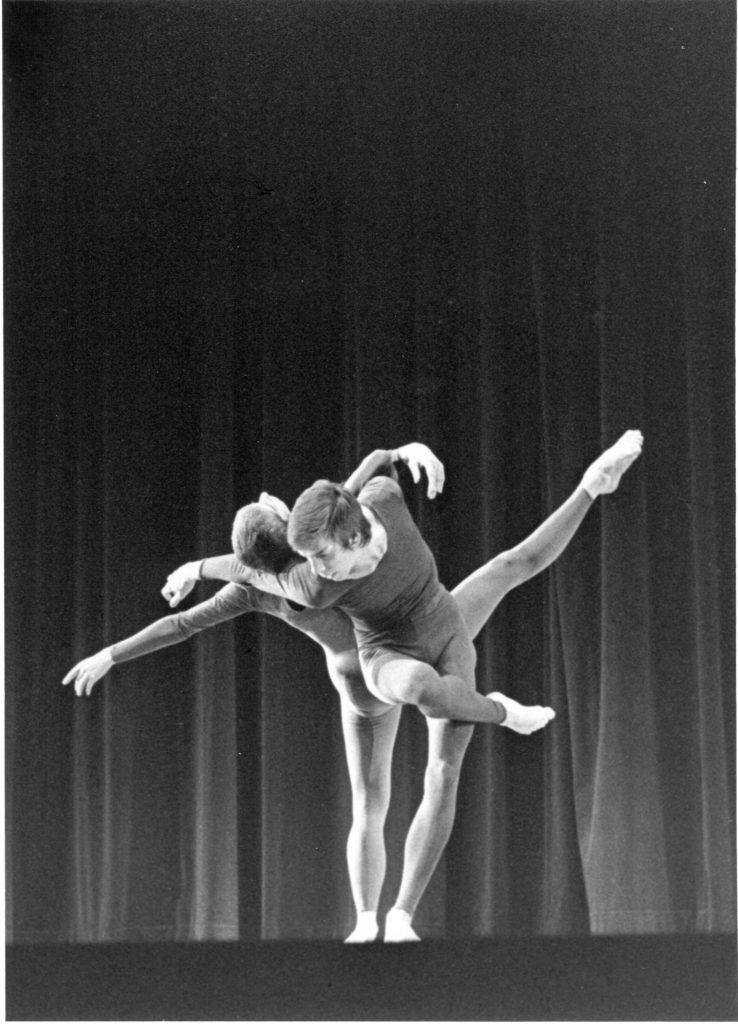
Viola Farber and Jeff Slayton in “Tendency” (1971) – Choreography by Viola Farber – Photo by Theresa King
The Farber company members arrived the final few days of the festival to rehearse for the performance scheduled for the final day of the festival. Viola and I were scheduled to perform a duet titled Doublewalk, and her company would dance two of her other works. Sadly, and in spite of the fact that Viola had recently been written up as one of France’s national treasures, we found ourselves standing on a makeshift outdoor stage far away from the center of the festival’s other performances. Even in France a company led by an American/French national treasure, was being treated as the adopted step children of the festival. The show must go on. Chin up, makeup and costumes on, 5, 6, 7 and STOP!
During the run-through of one of Viola’s dances, a large section of the scaffolding style stage collapsed sending dancers to their knees and the Marley dance floor sagging like a black hole in outer space. Workmen appeared out of nowhere to repair the stage, using up all of our rehearsal time. For Viola, this was the proverbial straw. She and I put our heads together and decided that although her manager had informed us that many of Paris’ top dance critics were scheduled to attend, we would not perform. We did not wish to punish the company as it was their last chance to perform together, so they would perform, but the national treasure and I would not make an appearance onstage.
Performance time arrived, costumes were on and Alan Evans sat down at the rickety looking upright piano that the festival had provided for him to perform the music he had composed for one of Viola’s works. He later told us that as he performed, more and more keys that would get stuck down and that a couple of the piano’s wood panels began to fall off. One of those panels was the one behind the piano’s pedals, and it kept hitting Alan in the knees until he was able to free one hand to toss it aside. Ah, the glories and glamor of performing.
Weeks later I received a copy of the reviews that appeared in the Paris newspapers. The critics bestowed praise upon Viola’s choreography and her company of very talented dancers. What was shocking was that they reserved their best raves for Viola and me in our duet Doublewalk, stating that we were some of the best dance artists that America had to offer. Remember, we did not perform. Viola and I were standing right next to the stage that day in plain sight of the critics. They knew that we had decided to boycott the festival’s organizers.
When we talked, Viola and I concluded that the critics, most of whom had seen Viola and I perform together many times, decided to heap praise upon us even though we had not danced. They heard what we had been through and allowed us the accolades that perhaps they would have bestowed upon us had we actually performed. Vive les critiques français!
Written by Jeff Slayton for LADC’s “Stories From the Inside”, April 1, 2020.
**If you are a dance professional and wish to submit a writing to “Stories From the Inside”, please also include a short bio, high definition photos, and a head shot of yourself. Send these to info@ladancechronicle.com.
Our policy is: Your writing belongs to you. If we deem it necessary to edit your content we will seek your approval prior to publication. Please only submit content that you know can be published by LADC. There is no compensation for these stories as no one at LADC is being paid for this project. It is a labor of love for our art form.
Featured image: Viola Farber Dance Company – 1982 – Centre National de Danse Contemporaine in Angers, France – Photo by Tristan Jeanne Vales

